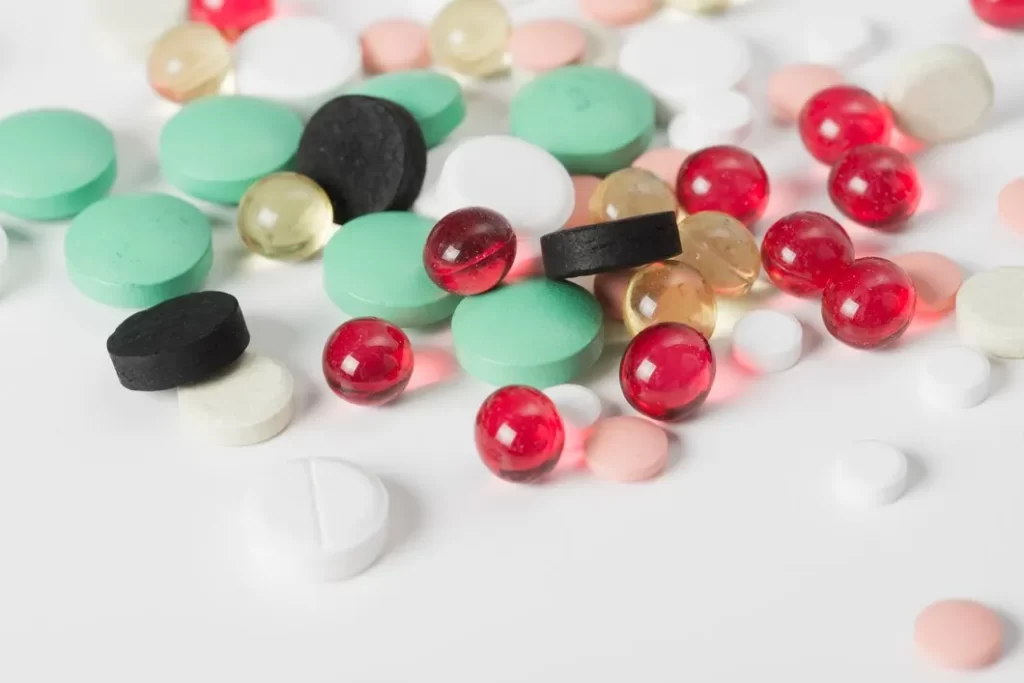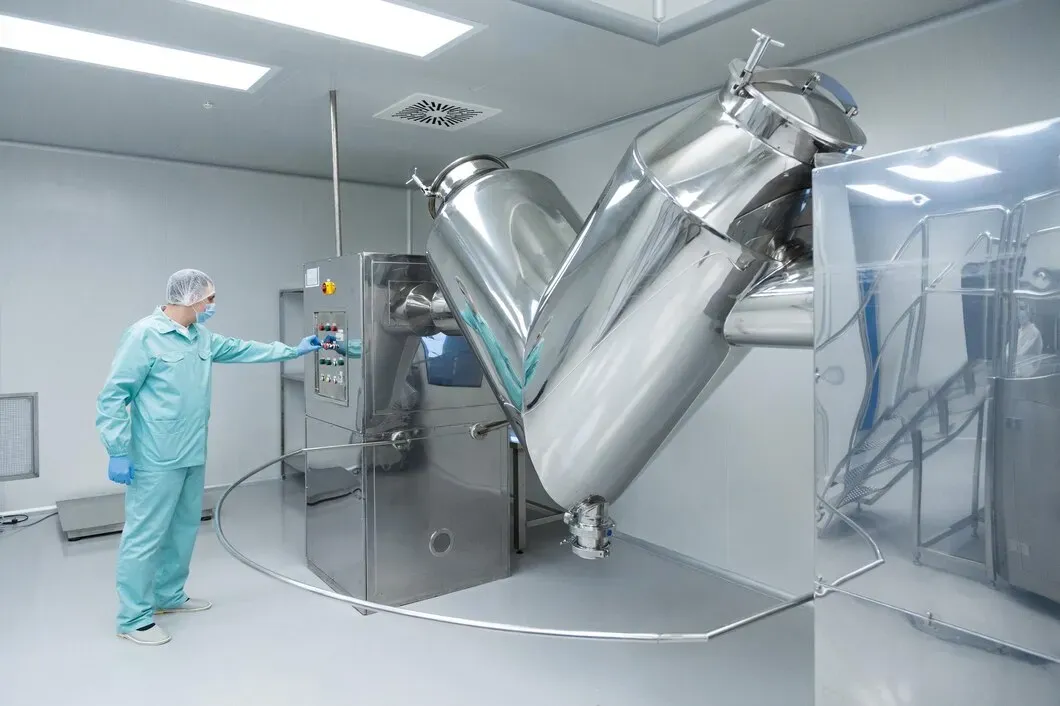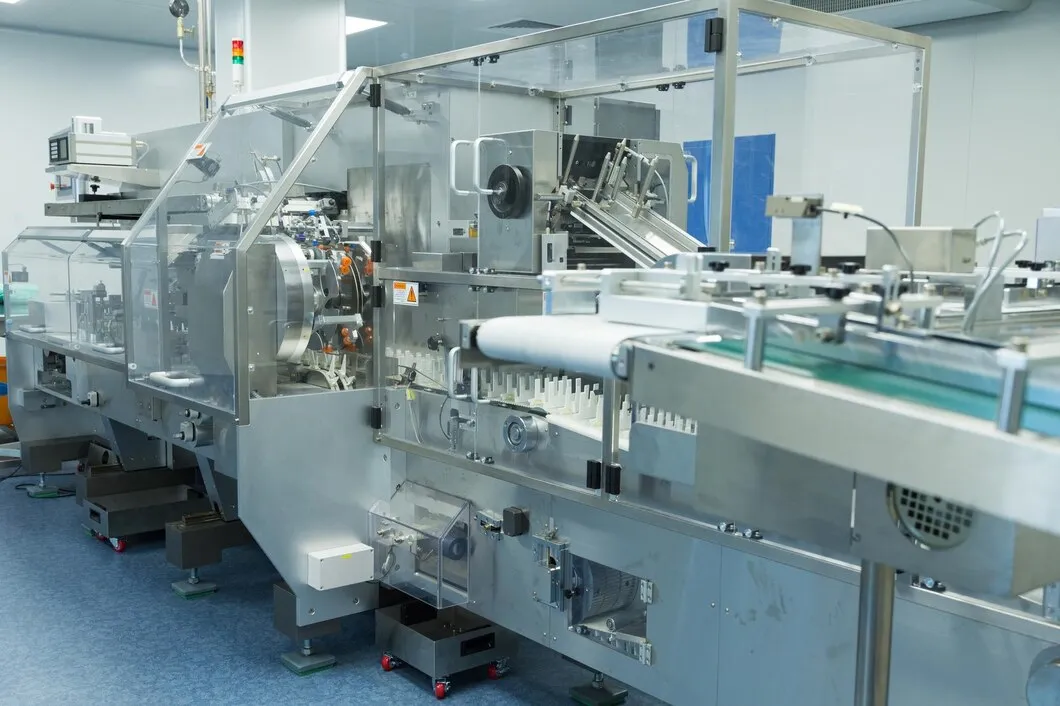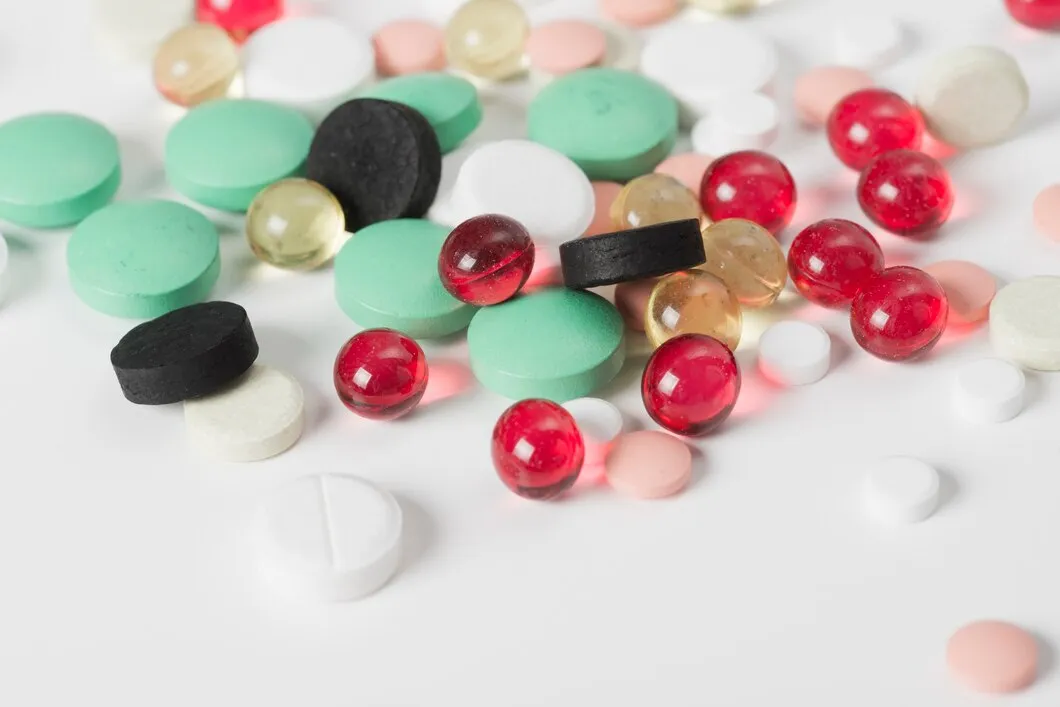اگر آپ فیصلہ کر رہے ہیں کہ فارماسیوٹیکل یا سپلیمنٹ پروڈکٹ کی فراہمی کیسے کی جائے، تو آپ جس شکل کا انتخاب کرتے ہیں-مائع جیل یا گولیاں- اس سے زیادہ شکل دے گا کہ یہ کیسا لگتا ہے۔ یہ اس بات پر اثر انداز ہوتا ہے کہ پروڈکٹ کیسے بنتی ہے، یہ کتنی تیزی سے جذب ہوتی ہے، آپ کو کس قسم کے سامان کی ضرورت ہوگی، اور آخری صارف اس کا تجربہ کیسے کرتا ہے۔ کچھ ایکٹیویٹ مائع بھرنے میں بہتر کام کرتے ہیں۔ دوسروں کو استحکام کے لیے ٹھوس خوراک کی ضرورت ہوتی ہے۔ اس کے بعد لاگت، شیلف لائف، اور پروڈکشن ٹائم لائنز پر غور کرنا ہے۔
یہ گائیڈ اسے عملی لحاظ سے توڑ دیتا ہے۔ کوئی مارکیٹنگ اسپن نہیں—بس کلیدی اختلافات جو اہم ہیں جب آپ اپنی اگلی پروڈکٹ تیار کر رہے ہیں، اسکیلنگ کر رہے ہیں یا سورس کر رہے ہیں۔

سافٹجیلزمائع جیل کے نام سے بھی جانا جاتا ہے، تیل، معطلی، یا نیم ٹھوس سے بھرے ہوئے سنگل پیس کیپسول ہیں۔ وہ جلیٹن پر مبنی شیل کے ساتھ بند ہیں، اکثر صاف یا رنگین۔ یہ اومیگا 3، وٹامن ڈی، اور کچھ سی بی ڈی یا جڑی بوٹیوں کے عرق جیسے سپلیمنٹس میں عام ہیں۔
گولیاں پاؤڈر سے بنی ٹھوس کمپریسڈ خوراکیں ہیں۔ وہ بغیر کوٹڈ، فلم لیپت، چبانے کے قابل، یا توسیع شدہ ریلیز ہوسکتے ہیں۔ آپ انہیں ہر جگہ دیکھیں گے - بنیادی وٹامنز سے لے کر نسخے کی ادویات تک۔
وہ سادہ نظر آسکتے ہیں، لیکن ہر فارمیٹ میں ٹریڈ آف ہوتے ہیں جو پیداوار، کارکردگی اور مارکیٹ کی پوزیشننگ کو متاثر کرتے ہیں۔
سافٹجیلز ایک خصوصی عمل کی ضرورت ہوتی ہے جسے روٹری ڈائی انکیپسولیشن کہتے ہیں۔ آپ بیک وقت دو چیزوں کے ساتھ کام کر رہے ہیں: جیلیٹن شیل اور مائع بھرنا۔ یہ ایک مسلسل عمل میں یکجا، بنتے، بھرے اور سیل کیے جاتے ہیں۔ خول تیزی سے سیٹ ہو جاتا ہے، لیکن ٹھیک ہونے اور خشک ہونے میں وقت لگتا ہے۔ آپ کو نمی، درجہ حرارت، اور viscosity کنٹرول کو سنبھالنے کے لیے سامان کی بھی ضرورت ہوگی۔
گولیاںاس کے برعکس، ہیں پیدا کرنے کے لئے آسان. پاؤڈرز کو ملایا جاتا ہے، اگر ضرورت ہو تو دانے دار بنائے جاتے ہیں، اور گولی پریس کے ساتھ شکل میں دبائے جاتے ہیں۔ آپ کوٹنگ کا مرحلہ بھی شامل کر سکتے ہیں، لیکن یہ ماڈیولر ہے۔ تبدیلیاں تیز تر ہیں، اور آلات زیادہ وسیع پیمانے پر دستیاب ہیں۔
اگر رفتار اور قیمت ترجیحات ہیں، تو گولیاں پیمانہ کرنا آسان ہیں۔ اگر آپ تیل یا حساس ایکٹو کے ساتھ کام کر رہے ہیں تو، softgels اضافی سیٹ اپ کے قابل ہیں۔
یہ وہ جگہ ہے جہاں softgels چمکتے ہیں۔ چونکہ فعال جزو مائع یا گھلنشیل شکل میں ہوتا ہے، یہ عام طور پر ہوتا ہے۔ تیزی سے جذب ہو جاتا ہے. یہ خاص طور پر چربی میں گھلنشیل مرکبات یا ناقص پانی میں گھلنشیل ایکٹو کے لیے مفید ہے۔
دوسری طرف، گولیوں کو جذب شروع ہونے سے پہلے پیٹ میں ٹوٹ جانا پڑتا ہے۔ کچھ فعال اس عمل میں طاقت کھو دیتے ہیں۔ دوسرے ٹھیک ہیں — لیکن اس کا انحصار بہت زیادہ تشکیل اور کوٹنگ پر ہے۔
اگر آپ تیز رفتار کارروائی کو نشانہ بنا رہے ہیں یا آپ کو جذب کرنے میں مشکل جزو ہے تو، مائع جیل اکثر زیادہ موثر ہوتے ہیں۔
Softgels زیادہ تر لوگوں کے لیے ہموار، بو کے بغیر اور نگلنے میں آسان ہوتے ہیں۔ ان کے پاس چاکی ذائقہ یا خشک ساخت بھی نہیں ہے جو کچھ گولیوں کے ساتھ منسلک ہوتے ہیں۔ برانڈنگ کے نقطہ نظر سے، softgels زیادہ پریمیم محسوس کرتے ہیں.
گولیاں واقفیت پر جیت جاتی ہیں۔ بہت سے صارفین ان پر بھروسہ کرتے ہیں کیونکہ وہ معیاری ہیں، خاص طور پر اوور دی کاؤنٹر اور نسخے کی ادویات میں۔ لیکن بڑی یا بغیر لیپت والی گولیاں کچھ لوگوں کے لیے نگلنا مشکل ہو سکتی ہیں۔
Softgels بہتر صارف کا تجربہ پیش کرتے ہیں. گولیاں زیادہ لچک اور واقفیت پیش کرتی ہیں۔
Softgels گرمی اور نمی کے لئے حساس ہیں. اگر وہ مناسب طریقے سے پیک نہ کیے گئے ہوں تو وہ ایک ساتھ چپک سکتے ہیں، بگاڑ سکتے ہیں یا آکسائڈائز کر سکتے ہیں۔ اس کا عام طور پر مطلب ہے فوائل پاؤچز، گہرے رنگ کی بوتلیں، یا ہائی بیریئر فلم والے چھالے والے پیک۔
گولیاں زیادہ مستحکم ہیں۔ وہ نمی کے خلاف بہتر مزاحمت کرتے ہیں، خاص طور پر اگر لیپت ہو، اور زیادہ تر حالات میں طویل شیلف لائف رکھتے ہیں۔ وہ بڑی تعداد میں نقل و حمل اور ذخیرہ کرنے میں آسان ہیں۔
چیلنجنگ ماحول یا طویل شیلف لائف کے لیے، گولیوں کا انتظام کرنا آسان ہے۔
آئیے پیمانے پر بات کرتے ہیں۔ ٹیبلٹ پریس ہزاروں یونٹ فی منٹ پیدا کر سکتا ہے۔ خام مال سستا ہے۔ تبدیلیاں تیز تر ہوتی ہیں۔ مزدوری کی ضروریات کم ہیں۔
Softgel لائنیں آہستہ چلتی ہیں۔ مشینری زیادہ پیچیدہ ہے، اور جیلیٹن شیل کے اجزاء لاگت میں اضافہ کرتے ہیں۔ آپ کو کیورنگ رومز اور ماحولیاتی کنٹرول کی بھی ضرورت ہوگی۔
گولیاں زیادہ سرمایہ کاری مؤثر اور پیمانے پر تیار کرنے میں تیز ہیں۔ Softgels کی قیمت زیادہ ہے لیکن وہ فارمولیشن اور مارکیٹ کے لحاظ سے پریمیم کا جواز پیش کر سکتے ہیں۔
اگر آپ کا پروڈکٹ مائع ہے یا اس میں تیل پر مبنی ایکٹیویٹ شامل ہیں (جیسے مچھلی کا تیل یا CoQ10)، تو ایک سافٹجیل عام طور پر بہترین آپشن ہوتا ہے۔ گولیاں تیل یا غیر مستحکم اجزاء کے ساتھ جدوجہد کرتی ہیں، حالانکہ پاؤڈر اور گرینولز کو سنبھالنا آسان ہے۔
آپ کو کثیر اجزاء کے امتزاج پر بھی غور کرنے کی ضرورت ہے۔ ٹیبلیٹس زیادہ آسانی سے مکس اور میچ کر سکتے ہیں، بشمول لیئرنگ ریلیز پروفائلز (فوری + تاخیر)۔ Softgels اس علاقے میں زیادہ محدود ہیں.
مائع پر مبنی ایکٹیوٹس کے لیے softgels استعمال کریں۔ پاؤڈر، مجموعے، یا ترمیم شدہ ریلیز فارمیٹس کے لیے گولیاں استعمال کریں۔
کوئی ایک ہی سائز کے فٹ ہونے والا جواب نہیں ہے۔ لیکن یہاں سب سے اہم چیز کی بنیاد پر ایک فوری رن ڈاؤن ہے:
| عامل | سافٹجیلز | گولیاں |
| کے لیے بہترین | تیل، چکنائی میں گھلنشیل، حساس فعال | پاؤڈر، کثیر اجزاء کے فارمولے۔ |
| جیو دستیابی | اعلی (عام طور پر) | متغیر (ترتیب پر منحصر) |
| پیداوار کی رفتار | آہستہ | تیز تر |
| فی یونٹ لاگت | اعلی | زیریں |
| شیلف زندگی | زیریں (گرمی/نمی کے لیے حساس) | اعلی (خاص طور پر لیپت) |
| صارفین کا تجربہ | نگلنے میں آسان، پریمیم احساس | واقف، لیکن نگلنا مشکل ہو سکتا ہے۔ |
کے درمیان انتخاب مائع جیل بمقابلہ گولیاں اس بات پر منحصر ہے کہ آپ کیا بنا رہے ہیں، آپ اسے کس کے لیے بنا رہے ہیں، اور آپ کس طرح پیمانے کا منصوبہ بنا رہے ہیں۔ Softgels تیل پر مبنی یا تیزی سے کام کرنے والی مصنوعات کے لیے بہترین کام کرتے ہیں اور صارفین کو بہترین تجربہ پیش کرتے ہیں۔ ٹیبلیٹس زیادہ ورسٹائل، لاگت سے موثر اور زیادہ مقدار میں انتظام کرنے میں آسان ہیں۔
اگر آپ فارما یا سپلیمنٹس میں ہیں اور آپ اپنی اگلی پروڈکٹ لائن کی منصوبہ بندی کر رہے ہیں — یا اپنے مینوفیکچرنگ آلات کو اپ گریڈ کر رہے ہیں — تو فرق جاننے سے آپ کو مہنگی غلطیوں سے بچنے میں مدد ملتی ہے۔
یہ فیصلہ کرنے کے لیے سپورٹ کی ضرورت ہے کہ کون سا فارمیٹ آپ کے ورک فلو یا فارمولیشن میں بہترین فٹ بیٹھتا ہے؟ کنعان سے بات کریں۔ جدید مینوفیکچرنگ کے لیے ڈیزائن کیے گئے اعلیٰ کارکردگی والے ٹیبلٹ پریس اور سافٹجیل پروڈکشن سسٹم کے بارے میں۔




اس سے پہلے کہ کوئی بھی دوا مریض تک پہنچتی ہے، یہ لیبارٹری میں شروع ہو جاتی ہے۔ یہیں پر فارمولوں کی جانچ کی جاتی ہے، بیچوں کی جانچ پڑتال کی جاتی ہے، اور معیار کی تصدیق یا سوال کیا جاتا ہے۔ اس کام کو صحیح طریقے سے کرنے کے لیے، لیبز کا انحصار صحیح آلات پر ہوتا ہے — ایسے ٹولز جو نہ صرف کام مکمل کرتے ہیں، بلکہ اسے درستگی کے ساتھ کرتے ہیں۔ اگر آپ دوڑنے کے ذمہ دار ہیں یا […]

بلیسٹر پیکیجنگ فارما میں ہر جگہ ہے — گولیوں سے لے کر کیپسول تک نمونے کے پیک تک۔ یہ مصنوعات کی حفاظت کرتا ہے، شیلف زندگی کو بڑھاتا ہے، اور مریض کی حفاظت کو بہتر بناتا ہے۔ لیکن مینوفیکچررز کے لیے، یہ صرف پیکیجنگ سے زیادہ ہے — یہ ایک ایسا نظام ہے جو رفتار، درستگی اور تعمیل کے ارد گرد بنایا گیا ہے۔ اگر آپ فارما مینوفیکچرنگ یا پیکیجنگ پروکیورمنٹ میں ہیں، تو یہاں آپ کو چھالے کے بارے میں جاننے کی ضرورت ہے […]

اگر آپ فیصلہ کر رہے ہیں کہ فارماسیوٹیکل یا سپلیمنٹ پروڈکٹ کو کیسے ڈیلیور کیا جائے، تو آپ جو فارمیٹ منتخب کرتے ہیں — مائع جیل یا گولیاں — اس کی شکل اس سے کہیں زیادہ ہو گی کہ یہ کیسا لگتا ہے۔ یہ اس بات پر اثر انداز ہوتا ہے کہ پروڈکٹ کیسے بنتی ہے، یہ کتنی تیزی سے جذب ہوتی ہے، آپ کو کس قسم کے سامان کی ضرورت ہوگی، اور آخری صارف اس کا تجربہ کیسے کرتا ہے۔ کچھ ایکٹیوٹس بہتر کام کرتے ہیں […]